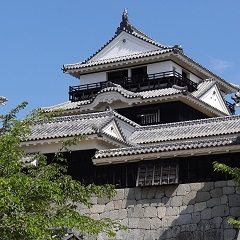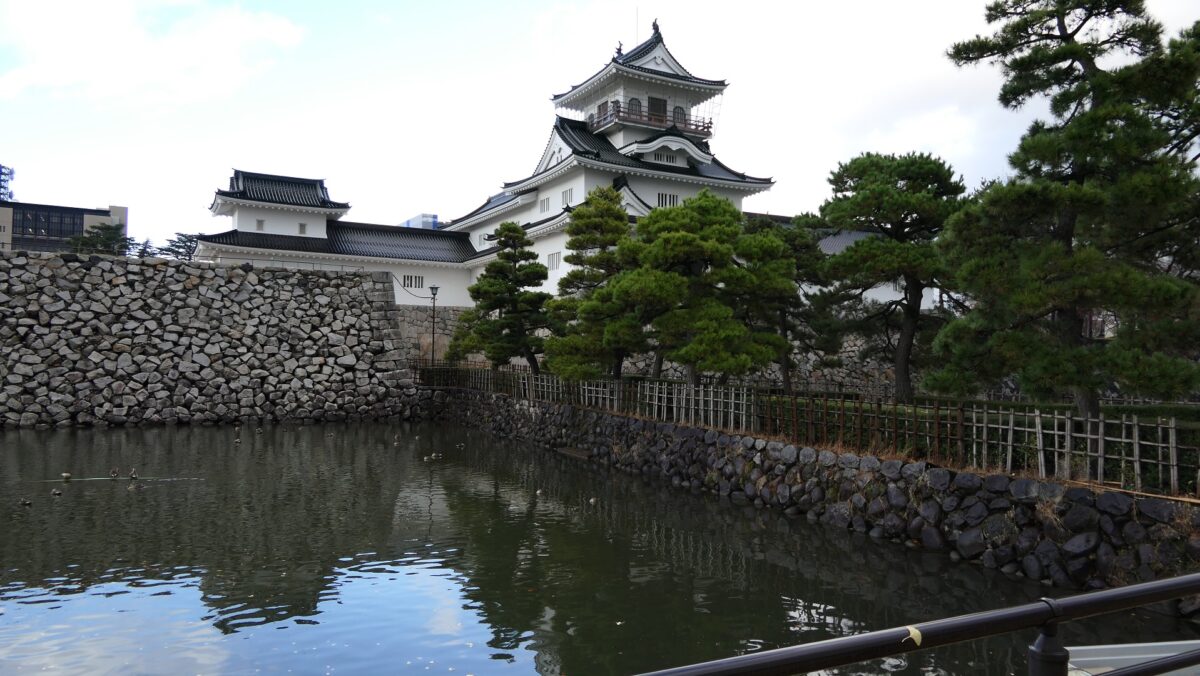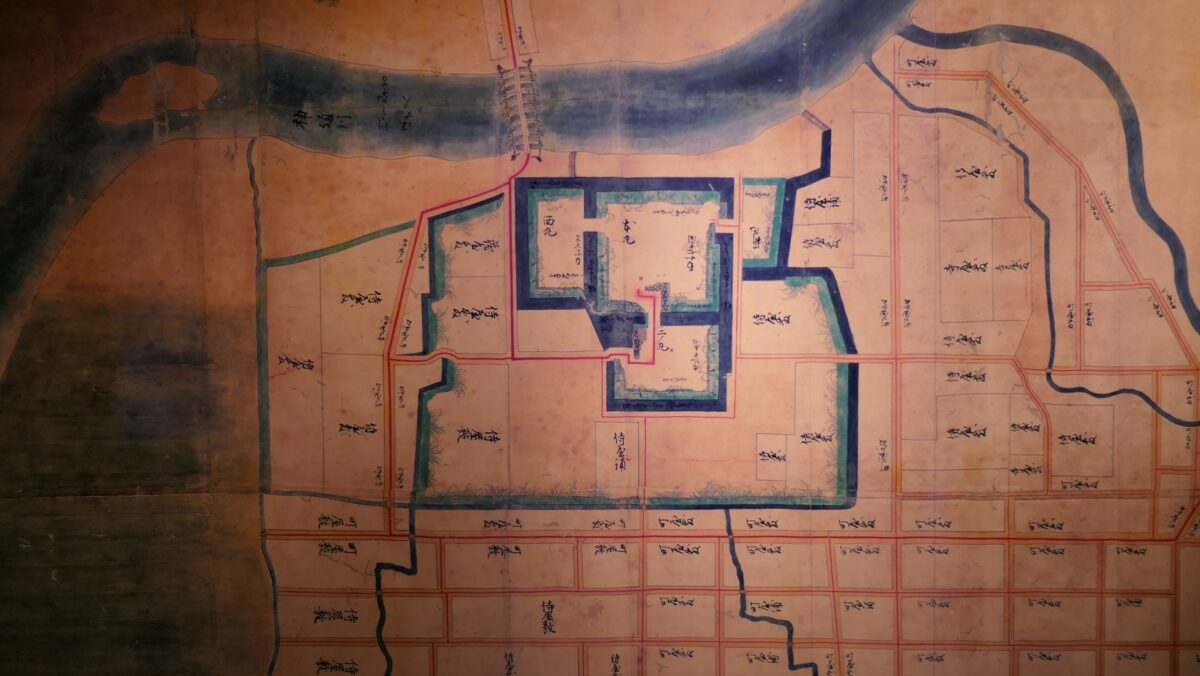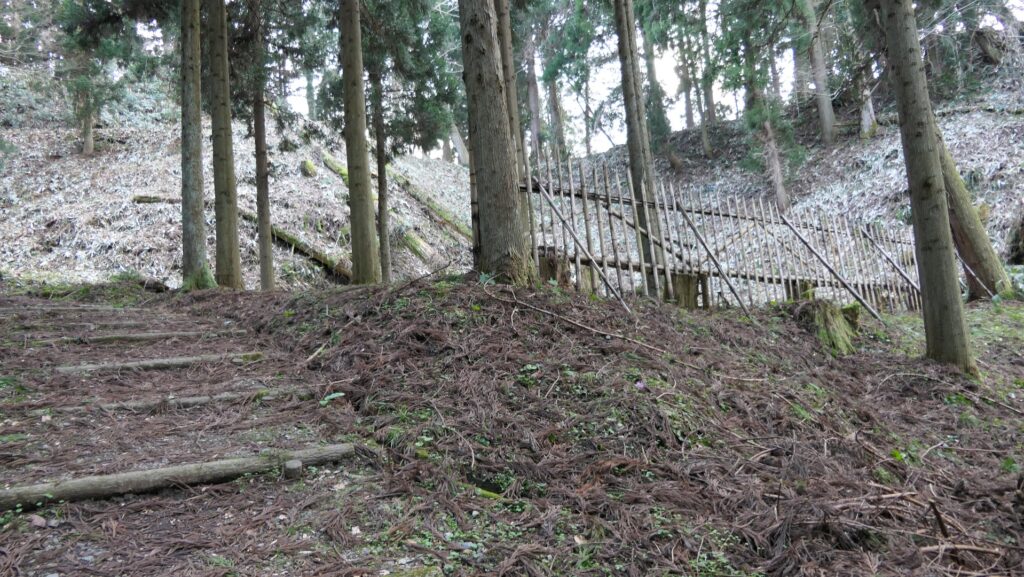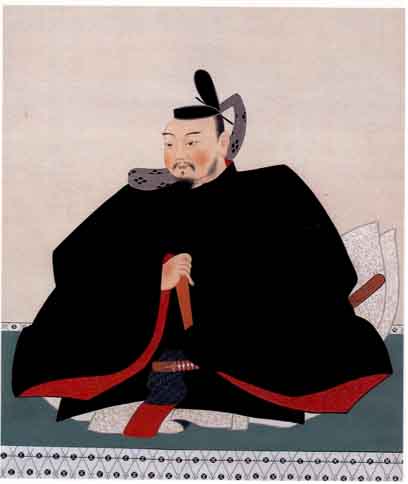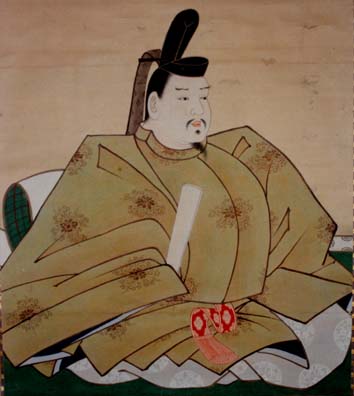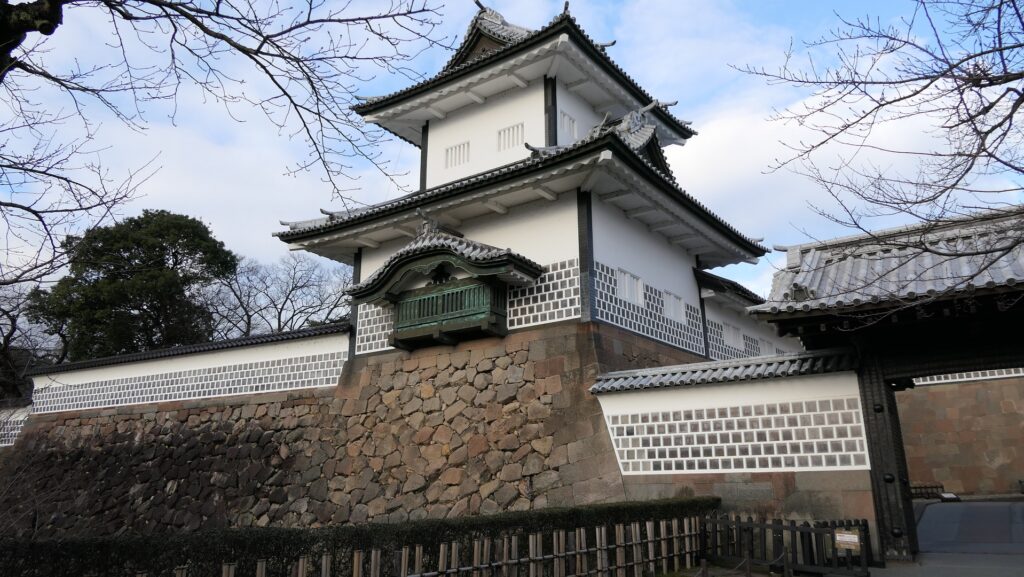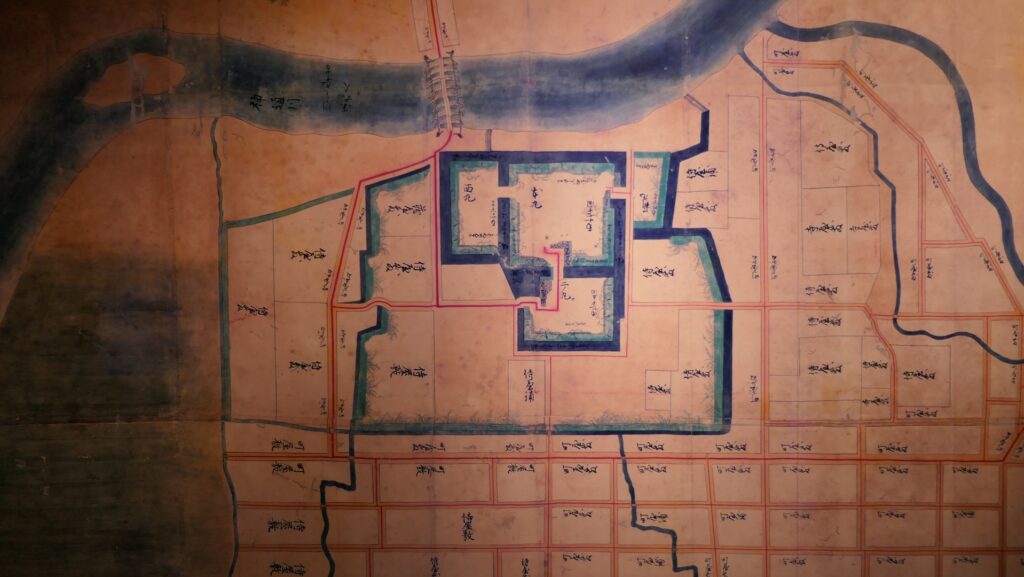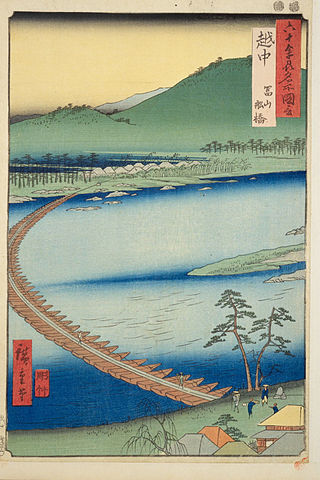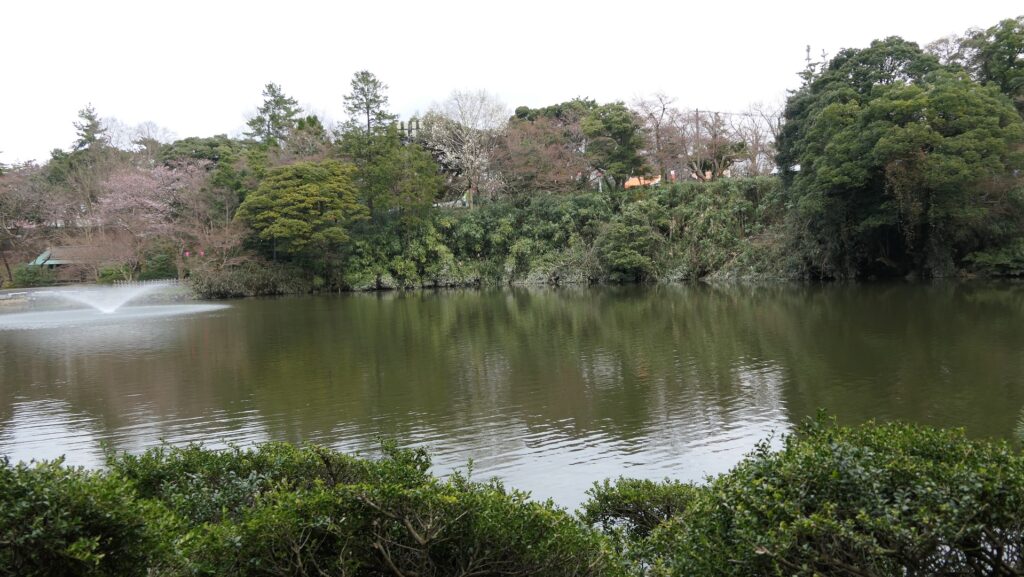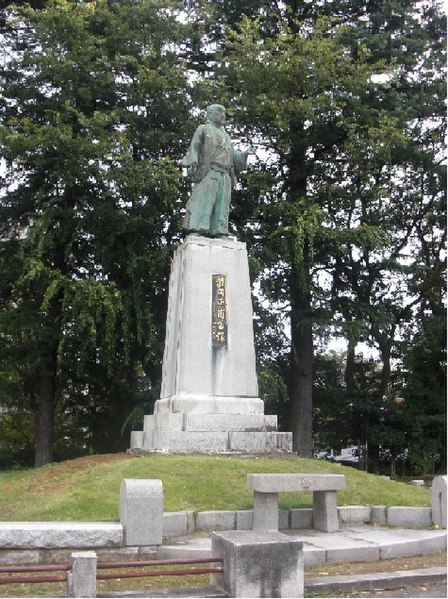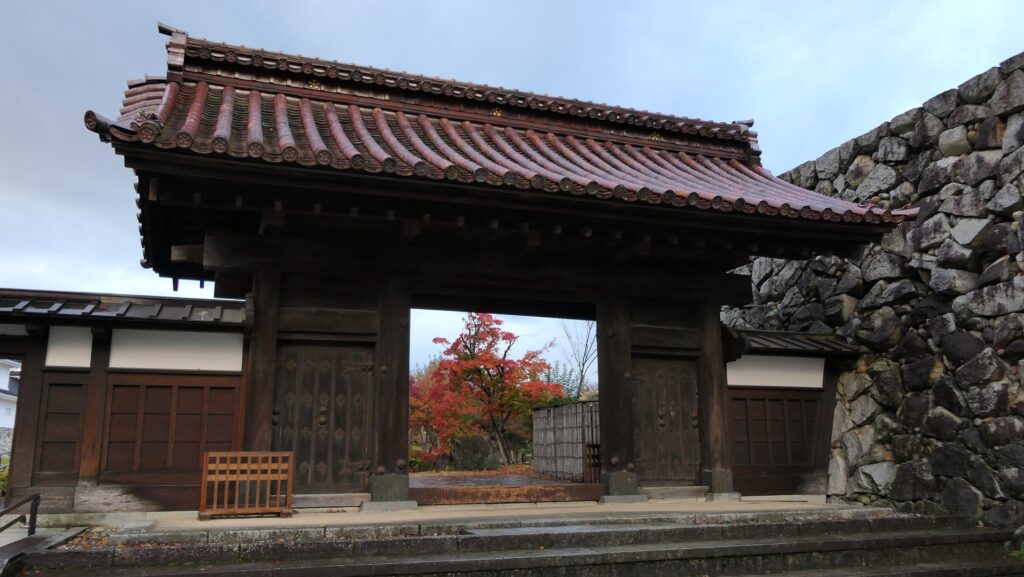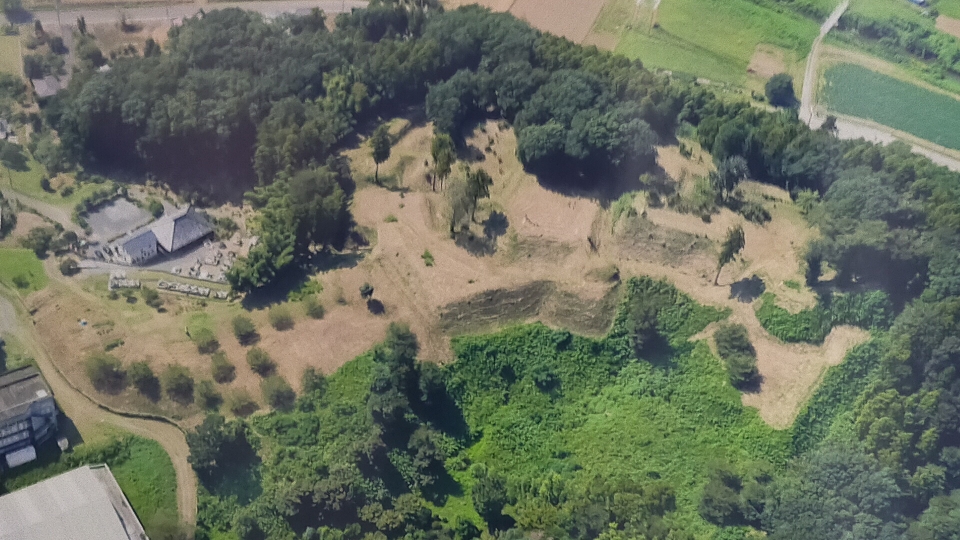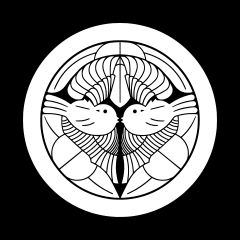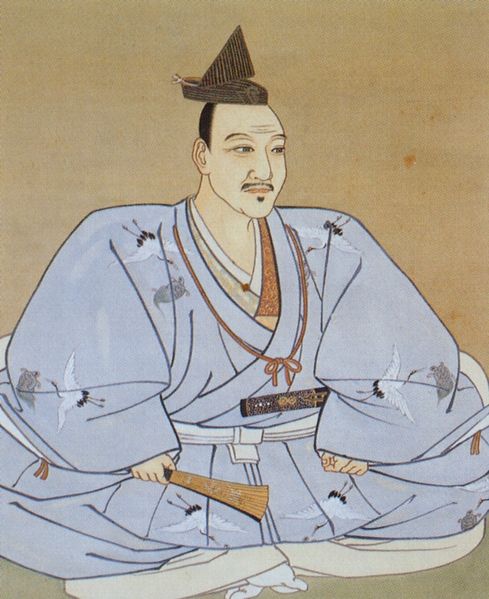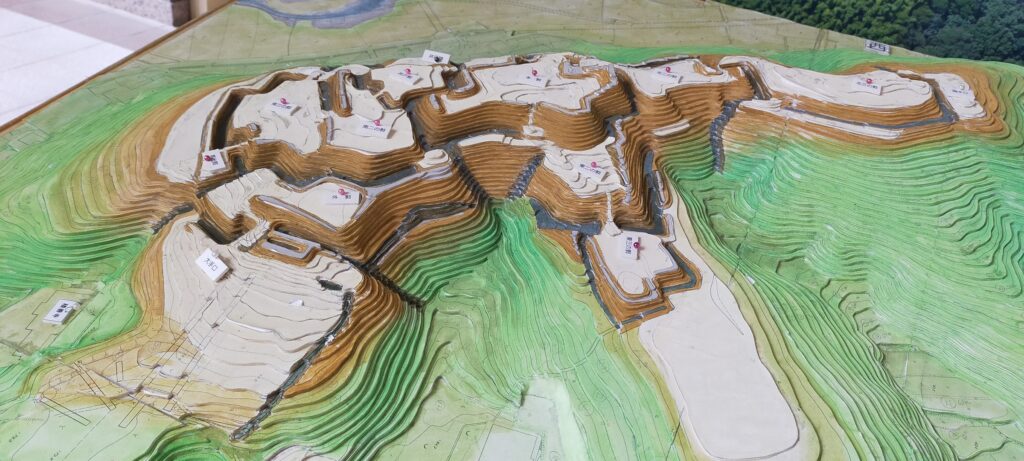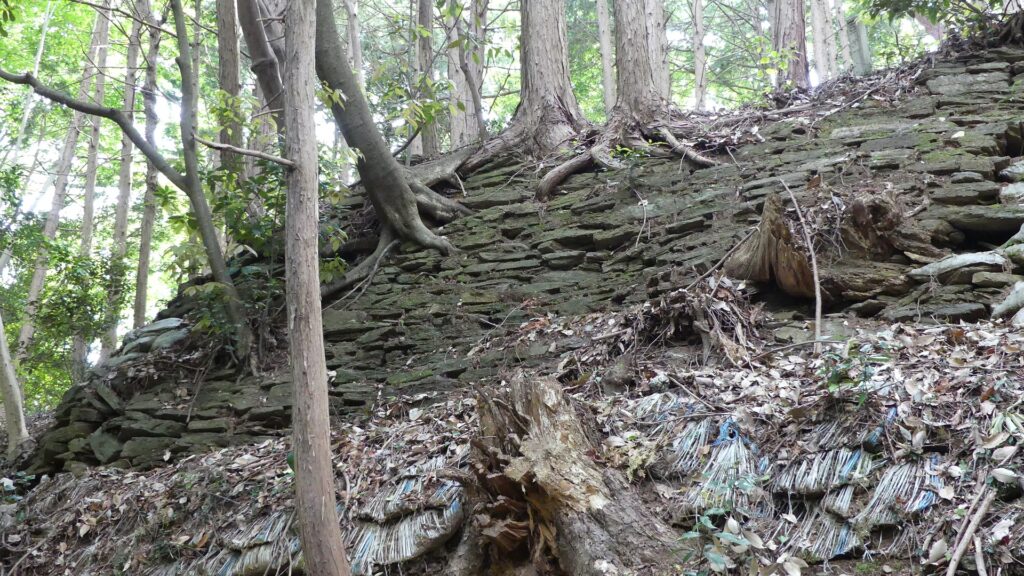Features
Appearance very different from past
Today, the ruins of Toyama Castle became Toyama Castle Park which is open to the public. The appearance of the park is much different from the original state of the castle in some ways. First, the Jintsu-gawa River was rerouted from the northern side of the castle to flow in another direction in 1899. Only a stream called Matsu-kawa River flows in the original position. Second, only the Main Enclosure and the Western Enclosure remain as the park, which were tied by burying the water moat between them. Finally, no castle buildings remain but some imitation items were built. Further details on that later.
The aerial photo around the castle

Original Stone Walls, Water Moats and Moved Gate
The highlights of the remaining items are the stone walls, part of the water moats, and the moved Chitose Hall Gate from the Eastern Barbican Enclosure. If you enter the park from the south, you can walk across the only remaining earthen bridge. The bridge is over the only remaining water moat to the ruins of the front gate called Kurogane-mon or the Iron Gate with the stone walls.
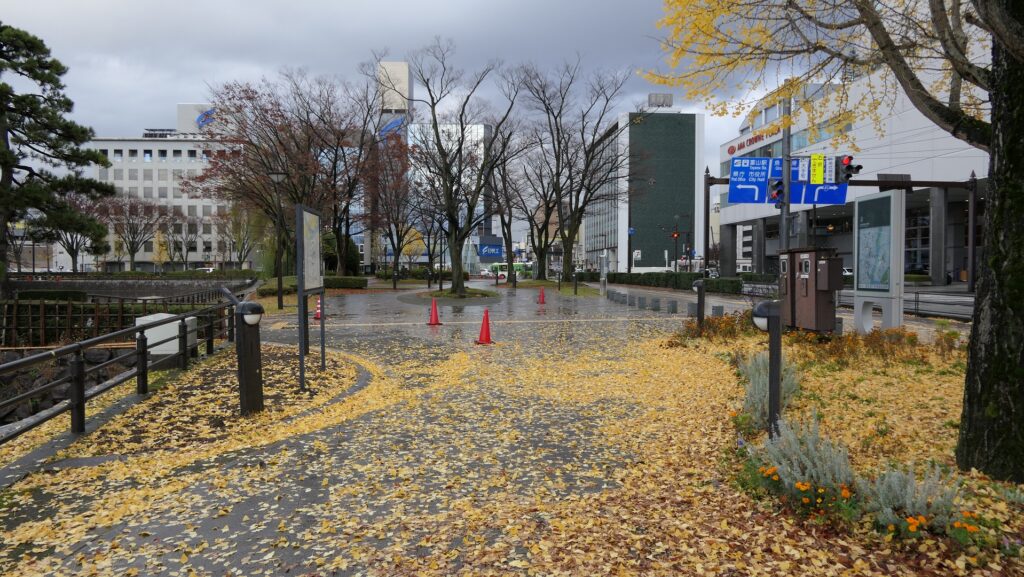
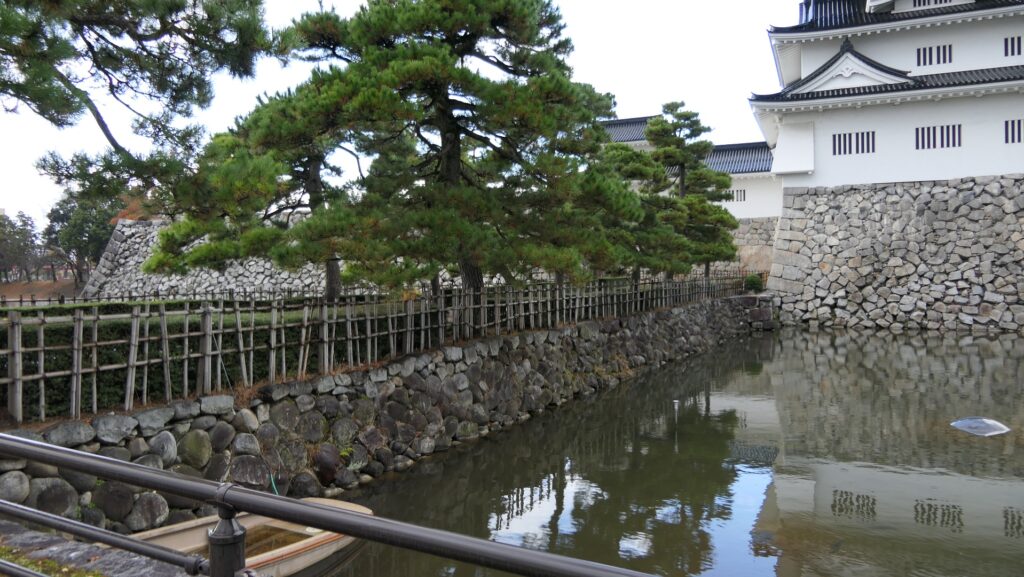

The stone walls include five huge ornate stones called Kagami-ishi or the Miller Stones. These stones look great and showed the authority of the lord in the past. This area is the most likely to be the original Toyama Castle.
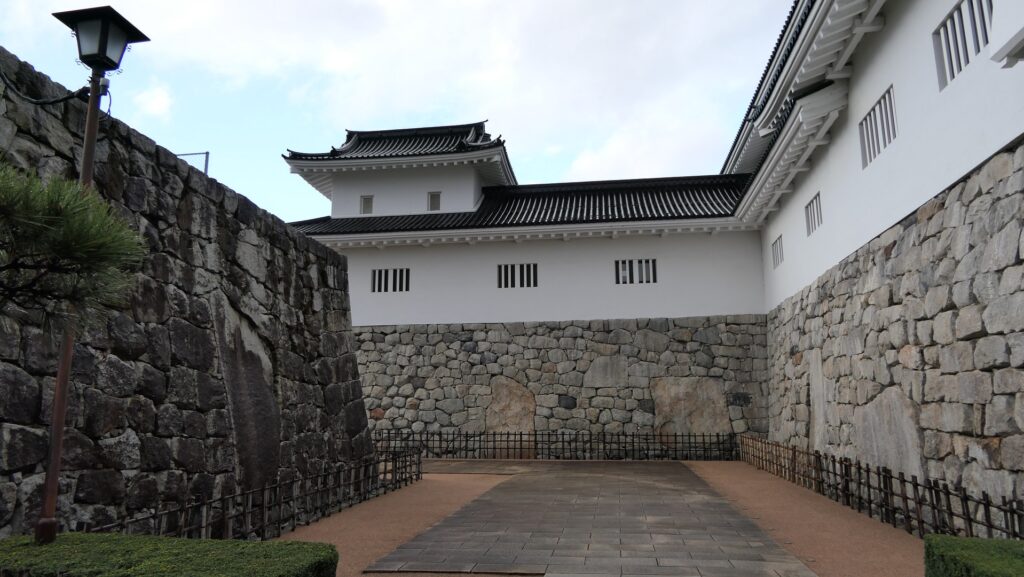

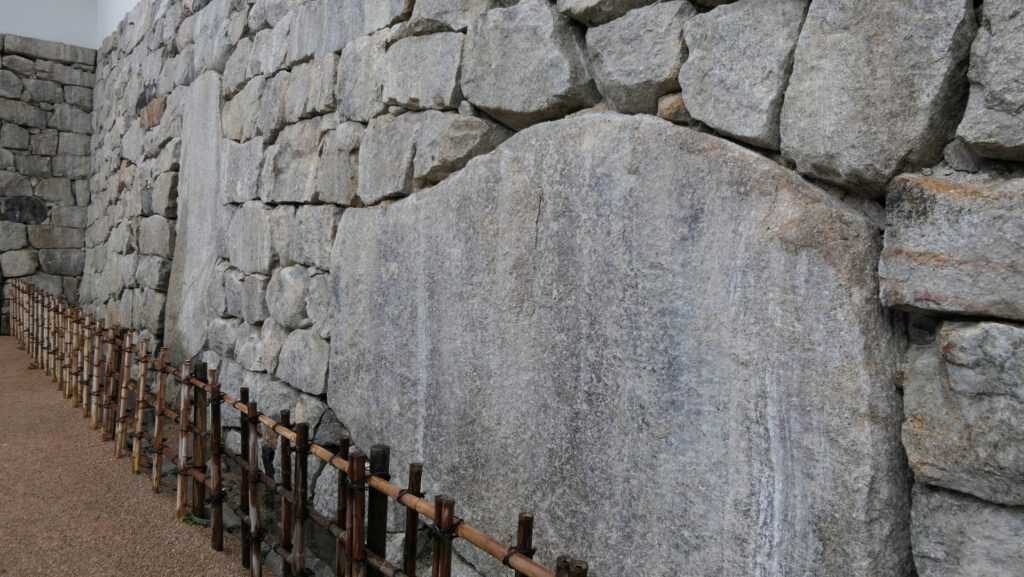
The other remaining stone walls of the back gate are at the northeast part of the castle. The Chitose Hall Gate is beside the stone walls.

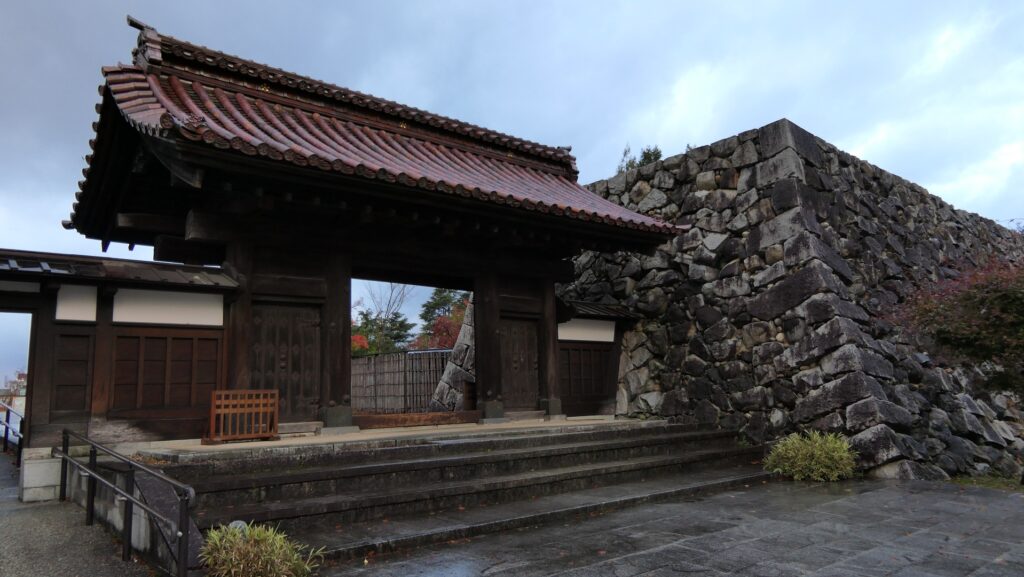
Imitated Stone Walls and Main Tower
On the other hand, another feature of the castle, the earthen walls can hardly be seen at the site. The outline of the Main Enclosure was originally made using the earthen walls connecting the stone walls. However, the outside part is covered with the imitation stone walls built recently. The inside of it was also piled up with some stones earlier on.
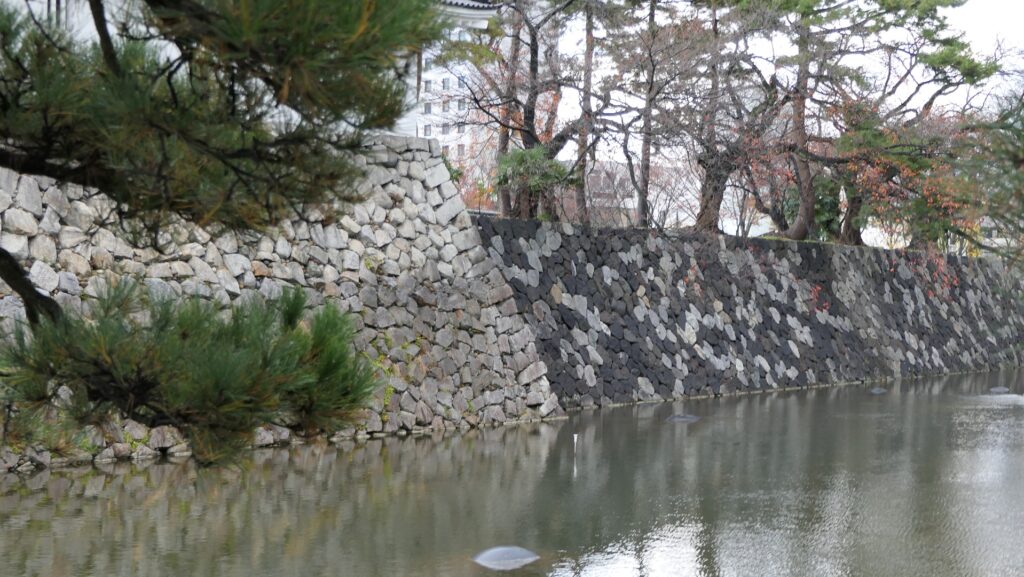

There are signboards which give information about the original stone walls at the site, but no explanation for the stone walls which were built in the present time. Visitors might be confused or misunderstand what the castle was like.
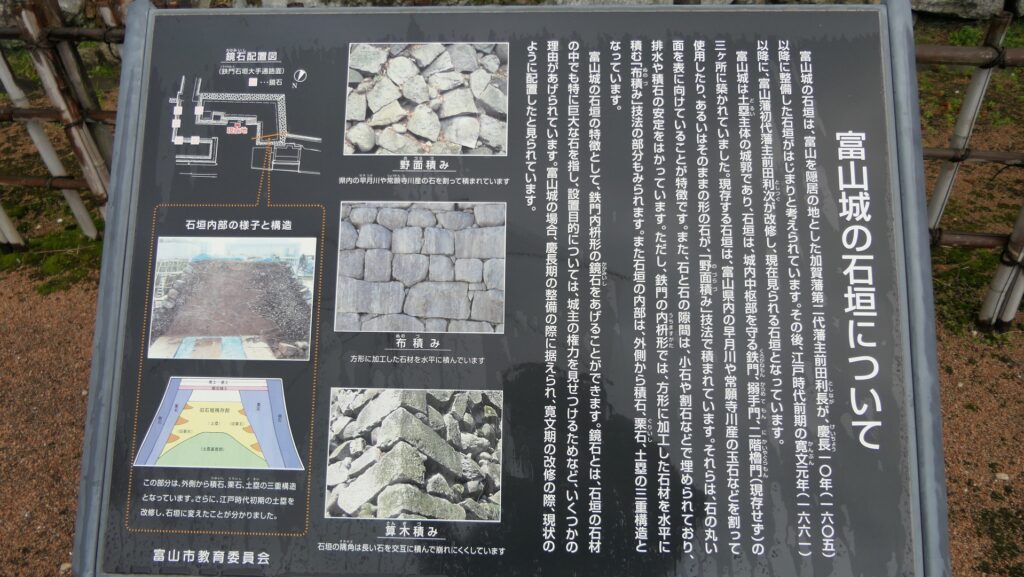
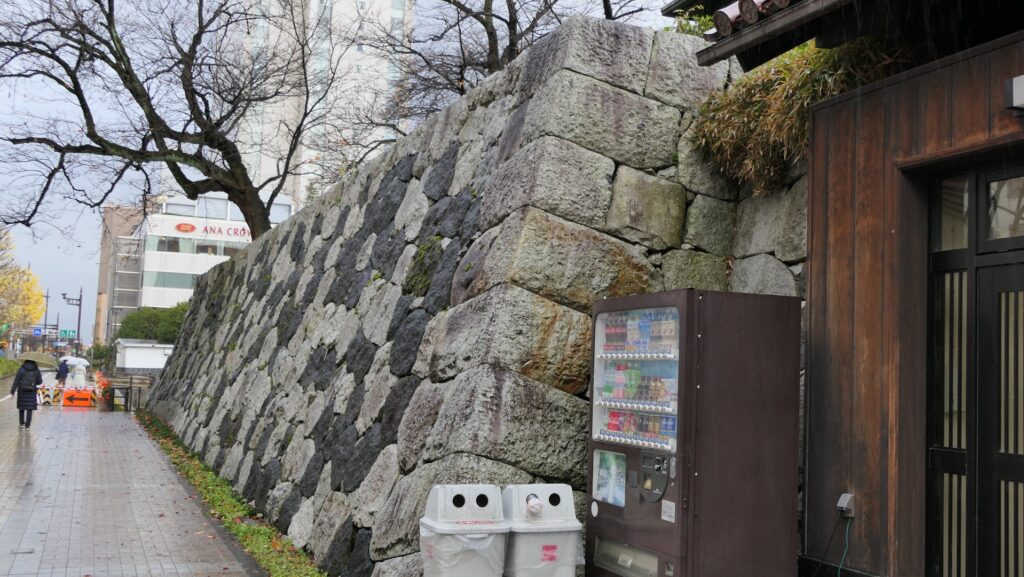
The building of Toyama Municipal Folk Museum is on the stone walls of the Iron Gate as the imitation Main Tower, where you can learn more about Toyama Castle inside. It has been a long time since its launch in 1954, so it has also become a symbol of Toyama City. Now the imitation building fits in with the original stone walls.
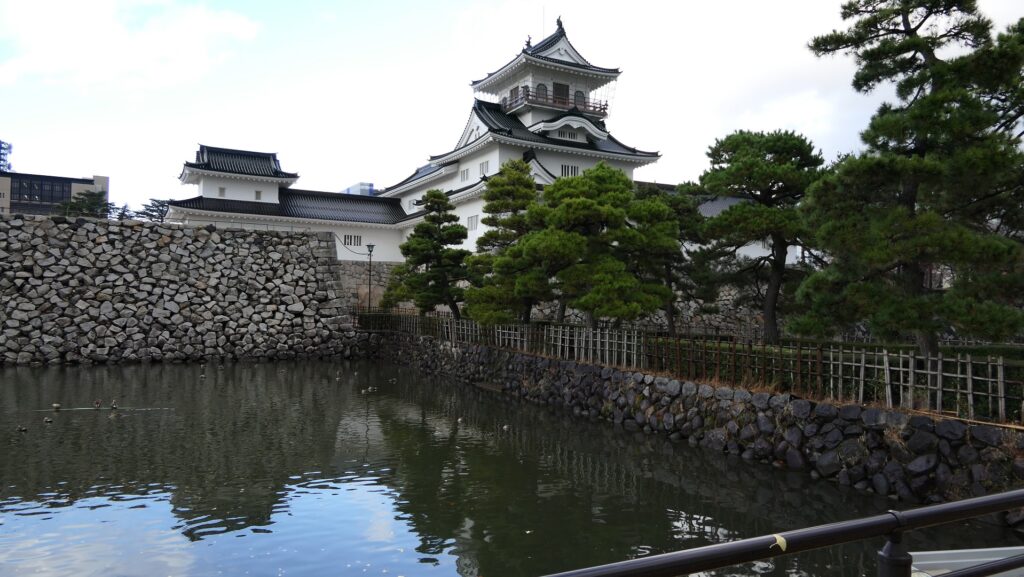
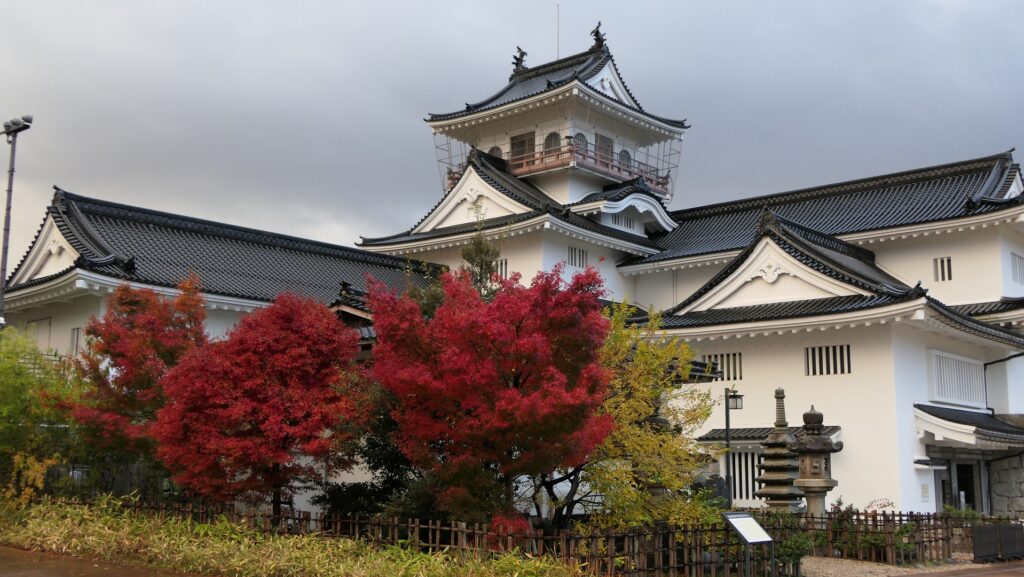
Another art museum building which looks like a turret is also built on the stone walls of the back gate. The citizens of the city might think Toyama Castle originally had the Main Tower and was built entirely using stone walls.
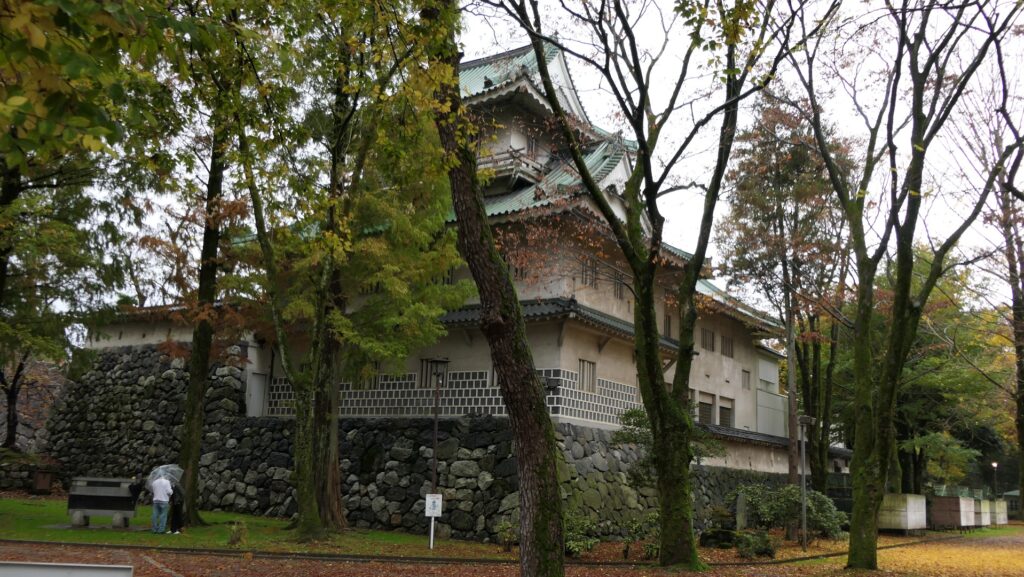
To be continued in “Toyama Castle Part3”
Back to “Toyama Castle Part1”
